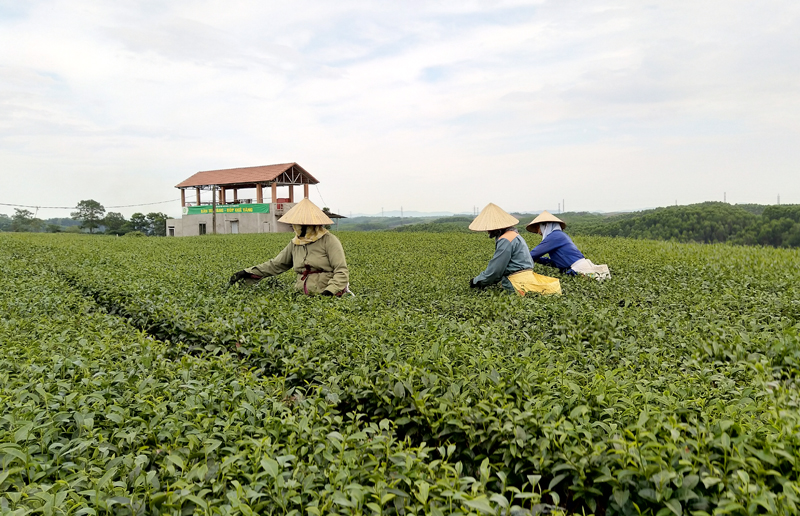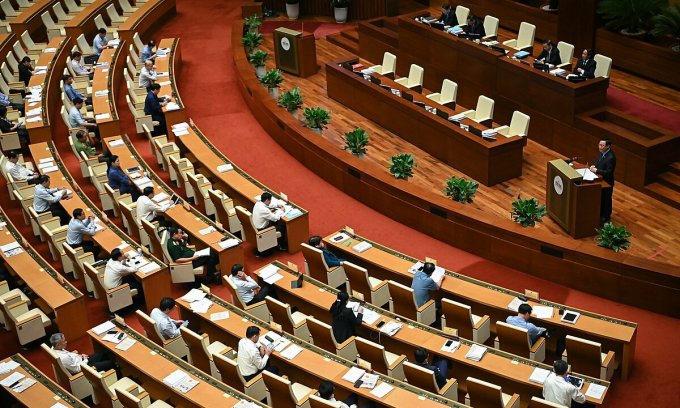What is the logbook of the Vietnam Farmers Support Fund?

“Hello Lawyer, I am a member of the Vietnam Farmers’ Union and have learned about the support fund for farmers. However, I still do not know clearly about the support fund for farmers and related issues such as registration books. What is the monitoring of the farmer support fund? Please advise.”. Hi, the support fund for farmers under the Vietnam Farmers’ Union was established on March 2, 1996. The legal basis for establishing the Farmers Support Fund is document No. 4035/KTTH dated July 26, 1995, of the Prime Minister. The Farmers Support Fund is under the direction and management of the Central Committee of the Vietnam Farmers’ Association. But what about the contents related to the farmer support fund or the farmer support fund monitoring book? Today, LSX Lawfirm will give you an article about “What is the logbook of the Vietnam Farmers Support Fund?“, as follows:
Legal grounds
Instruction No. 82-HD/QHHTTW
Farmer Support Fund
Farmers’ support fund is understood as a type of fund:
- Firstly, Support and help farmer members to build and replicate economic development models for poverty alleviation
- Secondly, Raise the scale of production and production of goods, and develop industries.
- Thirdly, Contribute to economic restructuring and development of collective economic forms in rural areas.
- Fourthly, Create jobs, promote the application of technical advances and new technologies to agricultural production, and exploit the potentials and strengths of each region to create a variety of quality and efficient agricultural products, goods, and services. high fruit.
- Fifthly, create conditions for the Vietnam Farmers’ Association to promote activities, propagate and gather farmers.
- Finally, Successfully implemented economic development programs of the Party and State for agricultural development, building new rural areas, improving farmers’ lives, and building strong associations.
What is the purpose of the Farmer Support Fund?
- Firstly, Support and assist farmer members in building and replicating economic development models for poverty alleviation; raise production scale and produce goods, develop professions; contribute to economic restructuring and development of collective economic forms in rural areas; create jobs, and promote the application of technical advances and new technologies to agricultural production, exploit the potentials and strengths of each region to create a variety of quality and efficient agricultural products, goods and services high fruit.
- Secondly, Create favorable conditions for the Vietnam Farmers’ Union to promote activities, propagate and gather farmers, and successfully implement economic development programs of the Party and State for agricultural development and new rural construction. , improving farmers’ lives and building a strong association.
What is the operating principle of the Farmer Support Fund?
- Firstly, Farmer Support Fund activities are not for profit but must preserve and develop capital and cover management costs.
- Secondly, To be solely responsible for the Fund’s operations before the law; comply with regulations on financial and credit operations in accordance with the State’s current regulations.
- Thirdly, The Farmers Support Fund may not raise capital and borrow capital in the form of savings deposits, issue of valuable papers, or borrow capital from organizations and individuals such as those of credit institutions.
What are the duties and powers of the Supervisory Board?
Duties and powers of Supervisory Boards at all levels:
- Firstly, Inspecting the compliance of the Farmers Support Fund with the guidelines of the Party, policies, and laws of the State, the direction of the Central Committee of the Association, and the Standing Committees of the Association at all levels.
- Secondly, Inspect financial activities, and supervise the observance of financial and accounting regulations. Every six months, once a year and according to the case, the Supervisory Board is responsible for reporting to the Standing Board of the Farmers’ Union at the same level on the results of inspection and supervision of the Fund’s financial activities.
- Thirdly, Appraisal of annual financial statements to assist the Standing Board of Farmers’ Associations at the same level.
- Finally, Prepare annual inspection and control reports and submit them to the Standing Board of the Farmers’ Association at the same level for approval and report to the Standing Board of the Farmers’ Union at the immediate superior.
What are the duties of the Fund’s Executive Board?
- To receive funds from the state budget and local budgets; mobilize capital contributed voluntarily from organizations and individuals at home and abroad in the form of donations, interest-free loans, or low-interest rates.
- Receive and manage funding, aid, and trust capital (in whole or in part) from domestic and foreign organizations and individuals to serve the construction and replication of support models. supporting farmers in economic development, creating jobs, eradicating hunger and reducing poverty, stabilizing their lives.
- Organize the appraisal and re-appraisal of the borrower’s loan application and perform lending and debt collection according to regulations.
- Manage capital and assets of the Fund in accordance with the law.
- Performing capital transfer services, insurance services, and other capital support services assigned by the Standing Boards of Farmers’ Unions at all levels.
- Coordinate with units and individuals to organize training activities, transfer technical and technological advances, and visit and exchange experiences at home and abroad to help borrowers use the capital for the right purposes and achieve efficiency. high.
- Organize training and retraining to improve management and administration capacity for the staff involved in the management and administration of the Fund.
- Fully implement the information, statistics, and reporting regime in accordance with the law and the Association.
- Perform other duties as assigned by competent authorities.
What are the powers of the Fund’s Executive Board?
- Organize the mobilization, management, and use of capital sources in accordance with the State’s regulations and the Fund’s Charter (the Fund Charter).
- To have the right to select projects and plans to submit to the Standing Board of Farmers’ Associations at the same level for a decision on support; support the mandate.
- To hire organizations and consultants to consider and appraise a number of projects and plans to borrow capital, apply for support and funding from the Fund; training and foster fund managers and executives when approved by the Standing Board of Farmers’ Associations at the same level.
- And To request units and individuals whose projects or plans are being considered or supported by the Fund to provide relevant information on production, business, financial and credit situations. . Check periodically or irregularly the use of capital and issues related to the use of loan capital of the Fund then.
- To be considered for debt extension, overdue debt transfer for borrowers of capital sources under their management authority according to Article 16 of the Fund’s Charter then.
- Suspension of capital support or early recovery of capital in cases where borrowers violate commitments to the Fund, and at the same time request the government and related industries to support to recover capital or initiate lawsuits under the provisions of law then.
- To refuse requests to provide information, financial resources, and human resources of the Fund to any organization or individual if such requests are contrary to law and the Fund’s Charter. Direct relations with organizations and individuals at home and abroad to perform the Fund’s tasks.
FINANCIAL MANAGEMENT CONTENTS
About the source of capital
The Fund’s working capital is formed from the following sources:
- The capital allocated by the State is 40 billion VND.
- Funds mobilized domestic and foreign organizations and individuals to support and lend interest-free or low-interest rates.
- Capital is received from funding sources of international organizations, organizations, and foreigners to help develop the rural socio-economic in Vietnam.
- Entrusted capital of the State, and domestic and foreign organizations to finance agricultural and rural development.
- Annual capital replenishment.
- The Fund is not allowed to raise capital and borrow capital in the form of savings deposits, issue of promissory notes, bills, commercial loans, etc. like credit institutions dealing in currency.
About capital use
The Fund’s operating capital is used to help farmers, especially poor households, have the capital to develop production. Funds to help farmers are provided in the form of loans with repayment support (with a limit, with a term) with no interest, only fees.
And The Fund is responsible for managing and using the capital for the right purposes, for the right subjects, effectively, promptly, and fully recovering loan amounts to assist farmers in order to preserve capital and fully and timely repay. for organizations and individuals to finance the Fund in the form of repayment.
The Fund is not allowed to use operating capital to carry out the purposes of making money in business.
About Tolls
The Farmer Support Fund is charged a fee on the loan amount to help farmers. Fee level in principle: To ensure that necessary expenses for the Fund’s operation are covered, including fees and interest paid to individuals and organizations providing capital (with a collection of fees or interest at preferential interest rates); pay salaries, travel expenses, stationery and other expenses necessary for the Fund’s operation; at the same time, the fee level must be suitable for each type of household, each region and each time period; Specifically:
- Fees charged for loans to poor households are lower than loans to non-poor households.
- The fee charged for loans to households in mountainous and island areas is lower than for households in the lowland and midland areas.
- The highest lending fee is not more than 80% of the lending interest rate of the same term of a local credit institution at the same time.
- Based on the above principles, the Central Standing Committee of the Vietnam Farmers’ Union shall direct and guide the Fund to develop the fee schedule.
- The Central Standing Committee of the Association signed the decision to issue the fee schedule for the Fund to implement.
The amendment of the above principles shall be made only after obtaining the written approval of the Ministry of Finance.
Financial revenue and expenditure of the Fund
a. The Fund’s income includes:
Collecting loan fees to support members.
Collection of entrustment loan service fees.
Other revenues: contributions from domestic and foreign organizations and individuals to the Fund’s operations (if any).
The Fund is responsible for proper, fully, and timely collection of revenues.
b. Fund’s operating expenses:
Operational costs include:
+ Paying fees for organizations and individuals at home and abroad to finance the Fund with fee collection.
+ Interest payment: For funds received from grants and trusts of domestic and foreign organizations and individuals, interest must be paid (preferential interest rates).
+ Other expenses (if any). Management costs:
+ Paying salaries for a staff of the Fund (for staff who are not on the payroll of Farmers’ Unions at all levels). The salary payment is decided by the Central Standing Committee of the Farmers’ Association; according to the current regulations of the State.
+ Allowances for staff of the Association assigned to manage and operate the Fund. Based on the actual income, the President of the Vietnam Farmers’ Union shall specify the appropriate allowance level. The maximum spending level does not exceed 50% of the salary of the Association staff; assigned to manage and operate the Fund.
In addition
+ Firstly, Expenses for social insurance, health insurance, and other payables according to salary, according to the regime prescribed; by the State (for cadres not on the payroll of Farmers’ Unions at all levels).
+ Secondly, Expenses for business trips.
+ Thirdly, Expenses: basic depreciation, repair, and purchase of working tools (for assets under the management of the fund).
+ Other necessary and reasonable expenses such as expenses for professional training, conferences, receptions…
+ Deduction for risk provision:
The rate of deduction is 0.05%/month on the average monthly loan balance.
* Time of deduction is the last day of the month.
* The maximum reserve fund is equal to 10% of the outstanding balance; as of December 31 every year, the excess (if any) is supplemented with working capital then.
The risk reserve fund is used to offset uncollectible support loans. The Fund shall develop a regulation on setting up, management, and use of the Risk Reserve Fund; and submit it to the President of the Vietnam Farmers Association for signing and promulgation; after reaching an agreement with the Ministry of Finance then.
c. Distribution of revenue and expenditure difference:
The difference between annual revenue and expenditure distributed as follows:
Deduct 1.8%/year of the State capital at the Fund to add to the State capital at the Fund then.
The rest (regarded as 100%) specifically allocated as follows:
Firstly, Deduct 50% to add to working capital for supporting loans.
Secondly, Deduct 20% to set up an investment fund for capital construction and purchase assets to serve the Fund’s operations.
The remaining 30% will deduct to establish 2 funds: reward and welfare. The rate of deduction for the two funds applied; according to the regime prescribed by the State for State-owned enterprises then.
So The difference between revenue and expenditure; after setting aside two bonus and welfare funds; still added to the fund for capital construction investment and asset purchase.
Fund Monitoring Book Support farmers
The bookkeeping track of the farmer support fund is a collection of books related to cash conversion; collection and use of fees; details of fund sources; and details of lending and debt collection; details of tracking overdue debt…. Wrong purpose of following up, checking the source of funds to support farmers then.
Contents of the monitoring book of the Farmer Support Fund
- Firstly, Cashbook money
- Secondly, a Detailed book of fee collection and use
- Thirdly, Detailed book of funds to support farmers
- Detailed loan book, debt collection
- Finally, a Detailed book to monitor overdue debt from the farmer support fund
Consulting service of LSX Lawfirm
Above is LSX Lawfirm’s advice on the content of the problem “What is the logbook of the Vietnam Farmers Support Fund?“. And all the above knowledge to use in work and life. If you have any questions and need more advice and help, please contact the hotline for the reception. Lawyer X is a place that provides reputable and fast business services at reasonable prices. Customers will be extremely satisfied when using our services.
- FB: www.facebook.com/luatsux
- Tiktok: https://www.tiktok.com/@luatsux
- Youtube: https://www.youtube.com/Luatsux
Related article
Convert agricultural land to farmland in Vietnam
Limits for receiving a transfer of agricultural land use rights in Vietnam
What to do when invited to play securities in Vietnam but lost everything?
Extension of tax payment and agricultural land rental in Vietnam
Dossier to borrow funds from the Farmers Support Fund in Vietnam
Related questions
“The district-level People’s Cooperative Fund’s Executive Board manages and administers the funds mobilized by the Commune Farmers’ Association on the principle that the People’s Co-operative Fund can be mobilized in any commune and lend it to that commune. However, for units that can mobilize too small capital (under 20 million VND), the district-level People’s Cooperative Fund accumulates capital and lends to communes to build a model in accordance with the policy of the Central Committee of the Association. , giving priority to commune-level units that get good results and have feasible projects to get loans first. Thus, when the commune-level People’s Committee mobilizes capital from 20 million VND or more, loans to the commune, short-term (under 12 months) or medium-term (from 12 months or more) are provided by the Farmers’ Union. The commune proposes the district-level People’s Union Fund decision then.
The People’s Cooperative Fund operates not for profit but to gather, mobilize and promote the spirit of solidarity and mutual assistance among farmers for socio-economic development in rural areas, and participate in the construction of new rural areas. and build a strong peasant class.
The Farmers Support Fund provides loans to the following four areas and industries:
1. Firstly, Agriculture, forestry, fishery, and salt production.
2. Secondly, Developing trades and handicrafts.
3. Thirdly, Processing and consuming agricultural, forestry, aquatic products, and salt.
4. Finally, Trading in products and services serving agricultural, forestry, fishery, salt production, and farmers’ lives.
Contact LSX Lawfirm
Finally, hope this article is useful for you; answer the question: “What is the logbook of the Vietnam Farmers Support Fund?“. If you need more information, please contact LSX Law firm: at +84846175333 or Email: [email protected].
Conclusion: So the above is What is the logbook of the Vietnam Farmers Support Fund?. Hopefully with this article can help you in life, please always follow and read our good articles on the website: lsxlawfirm.com




